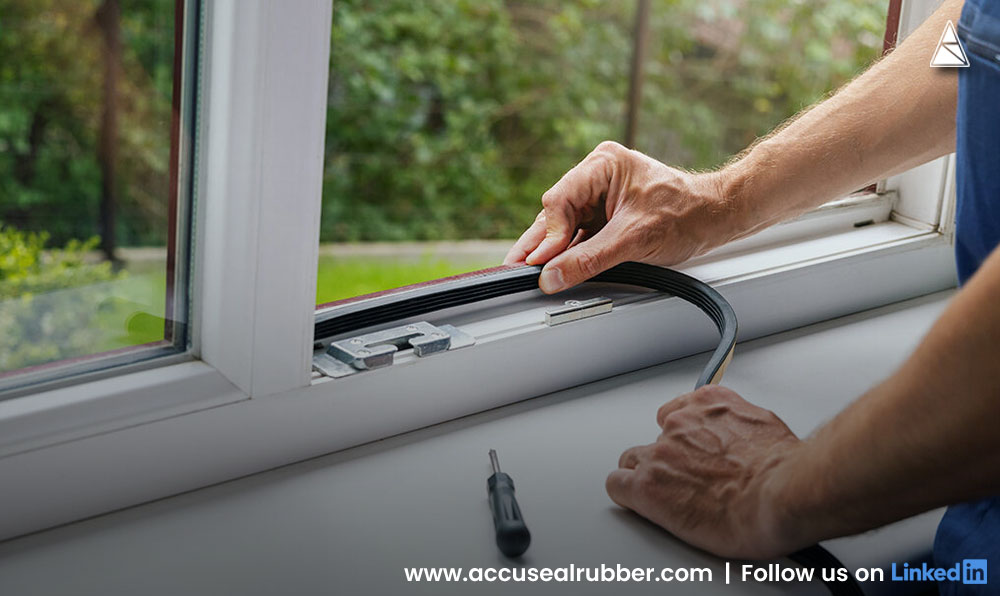Rubber seals are essential components in a wide variety of applications, from automotive engines to industrial machinery, plumbing systems, and even household appliances. These seals act as barriers to prevent leaks, protect against contaminants, and maintain pressure within a system. However, like any other material, rubber seals are subject to wear and tear over time.
To maximize the longevity of rubber seals and ensure optimal performance, proper maintenance is key. In this blog, we’ll explore practical tips to help you maintain your rubber seals and extend their lifespan.
1. Keep Seals Clean and Free of Debris
Dirt, dust, and other contaminants can accumulate on rubber seals over time, leading to premature wear or damage. Regularly cleaning your seals is one of the simplest yet most effective maintenance steps you can take.
How to Clean Rubber Seals:
- Use a soft cloth or sponge with mild soap and water to wipe down the seals.
- Avoid using harsh chemicals, solvents, or abrasive materials that can degrade the rubber.
- Ensure that you thoroughly dry the seals after cleaning to prevent moisture buildup, which can lead to mold growth or cracking.
2. Lubricate Regularly
Lubrication helps reduce friction between the rubber seal and the surfaces it contacts. It also helps maintain the seal’s flexibility and prevents it from drying out, cracking, or becoming brittle.
How to Lubricate Rubber Seals:
- Use silicone-based lubricants or a rubber-friendly grease specifically designed for seals. Avoid petroleum-based lubricants, as they can cause the rubber to deteriorate.
- Apply the lubricant evenly across the entire surface of the seal.
- Wipe away excess lubricant to avoid attracting dirt and debris.
3. Inspect Seals for Wear and Tear
Regular inspections are crucial for catching early signs of wear, cracks, or damage that could compromise the seal’s performance. This is especially important in applications where rubber seals are exposed to extreme temperatures, pressure, or chemicals.
What to Look For:
- Cracks or cuts: These can occur due to exposure to harsh environments or aging.
- Flattening or compression set: Over time, rubber seals can lose their original shape, reducing their effectiveness.
- Discoloration: This could be a sign of chemical degradation or UV exposure.
If you notice any significant damage, it may be time to replace the seal.
4. Protect Seals from Extreme Temperatures
Rubber seals can become brittle and crack when exposed to extreme cold or soften and degrade under high heat. To maximize the lifespan of your seals, ensure that they are operating within their specified temperature range.
Tips for Temperature Management:
- For applications involving high heat, choose seals made from heat-resistant materials like Viton or Silicone.
- In cold environments, use seals made from EPDM or Nitrile for better flexibility at low temperatures.
- If possible, insulate or shield the seals from direct exposure to heat or cold to reduce temperature fluctuations.
5. Avoid Exposure to Harmful Chemicals
Many rubber materials can degrade when exposed to certain chemicals, such as oils, fuels, solvents, or harsh cleaning agents. It’s essential to choose the right rubber material for your specific application and minimize exposure to chemicals that could damage the seal.
How to Minimize Chemical Exposure:
- Consult the seal manufacturer for guidance on the best material for your application. For example, Nitrile rubber is excellent for oil and fuel resistance, while EPDM is ideal for resisting water and chemicals.
- Store rubber seals in a clean, dry environment away from chemical fumes or vapors.
6. Ensure Proper Installation
Incorrect installation can lead to misalignment, over-compression, or pinching, all of which can shorten the lifespan of rubber seals. It’s important to follow the manufacturer’s installation guidelines and ensure that seals are fitted correctly.
Best Practices for Installation:
- Make sure the surfaces where the seal will be placed are clean, smooth, and free of debris.
- Avoid overstretching or twisting the seal during installation, as this can cause tears or deformation.
- Use appropriate tools and follow torque specifications to prevent over-compressing the seal.
7. Store Seals Properly When Not in Use
Rubber seals that are not in use should be stored in a controlled environment to prevent premature aging. Exposure to sunlight, oxygen, and ozone can degrade rubber materials over time.
Storage Tips:
- Store seals in a cool, dry, and dark environment, away from direct sunlight and sources of heat.
- Keep them in airtight containers or vacuum-sealed bags to limit exposure to oxygen and ozone, which can cause rubber to crack or deteriorate.
- Avoid storing seals near electrical equipment or motors that produce ozone.
8. Replace Seals When Necessary
No matter how well you maintain your rubber seals, they will eventually wear out and need to be replaced. Continuing to use damaged or worn-out seals can lead to system failures, leaks, or contamination.
Signs It’s Time to Replace:
- Significant cracking, hardening, or deformation of the seal.
- Loss of elasticity or flexibility.
- Persistent leaks or reduced performance even after maintenance.
Proactively replacing worn seals can save you from costly downtime and repairs.
Conclusion
Proper maintenance of rubber seals is essential for ensuring their longevity and optimal performance. By following these tips—regular cleaning, lubrication, inspection, and protection from environmental factors—you can extend the life of your seals and prevent system failures.
At Accuseal Rubber Inc., we specialize in high-quality rubber seals designed for a wide range of applications. Our products are engineered to withstand harsh conditions, and with the right maintenance practices, they can provide years of reliable service. If you need assistance with choosing the right seal or want more maintenance advice, contact our team of experts today.

 Nick Parker
Nick Parker